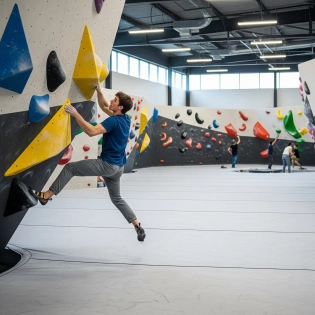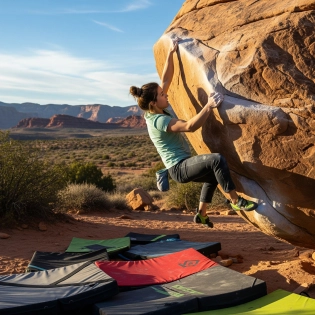
How do rock climbers not get tired?
Part of a rock climbers training is to be able to climb for longer periods of time. They do this by doing endurance training, which allows them to scale up very tall walls and long routes.
This also comes in to play with bouldering. Climbers are able to have long 3-4 hour climbing sessions by resting in between routes and attempts. The amount of time each climber rests depends on the climber, their endurance, and the route being climbed.
Generally, it's not abnormal for climbers to spend over 6 hours climbing. It's just the nature of the sport. Climbers are not constantly exerting energy the whole climbing session, they are resting enough time in between attempts to allow them to make the most out of each training session.
Even when climbing a big wall and a long route, climbers are able to find certain spots on the route to rest. And this is where climbers excel. Climbers can find spots to rest mid-route that would seem impossible to non-climbers. These spots could be very small hand holds, but for a climber, this could be all they need to recover some of their energy, reduce the pump in their forearms, and continue climbing.
Rock climbers are very efficient at pacing themselves, and only exerting the required amount of energy, and no more. They achieve this through training, experience, and properly reading the route.
Climbers do in fact get tired, just after a different amount of time than others, and they are able to handle it better than others.
In order for a climber to complete a route, which can sometimes very long and physically demanding, they must first understand the route and it's requirements, and what options they have that can help them finish it. Based on that, and on an understanding of what their own strengths are, they will decide on the beta that suits them best.
Knowing what they need to do on the route and properly reading it and coming up with the correct beta for themselves also allows them to find good resting spots. These resting spots are crucial for long and tough routes, as the climber can spend enough time in these resting spots to recover and to reduce the pump in their arms.
Climbers also train very hard in order to reduce the effects of the pump they feel in their arms, so that they are able to climb through it better, and to delay the pump from ever happening.














